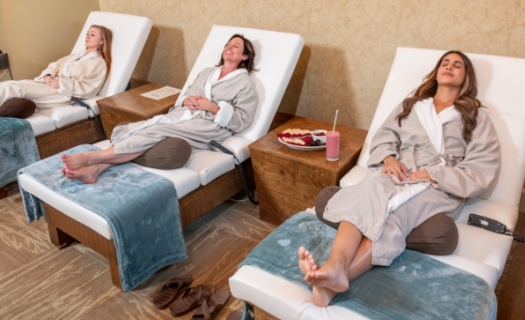
Reflexology, an ancient healing technique that dates back countless years, has actually obtained significant popularity in recent years as a corresponding therapy for advertising overall health and wellness and well-being. This alternative strategy to wellness is based upon the principle that details points on the ears, hands, and feet match to various body organs and systems within the body. By applying stress to these factors, professionals aim to alleviate various conditions and recover balance to the body.
Reflexology foot chart revealing pressure factors, watercolor style The beginnings of reflexology can be mapped back to old people, consisting of Egypt and China. In reality, hieroglyphics discovered in the burial place of an Egyptian doctor named Ankhmahor, dating back to 2330 BC, show what seems a reflexology treatment. In conventional Chinese medicine, the concept of qi (vital force energy) flowing with meridians in the body shares similarities with the principles of reflexology.
Modern reflexology, as we understand it today, was developed in the early 20th century by Dr. William Fitzgerald, an American ear, nose, and throat specialist. He presented the idea of “zone treatment,” which separates the body right into 10 vertical zones. This work was further fine-tuned by Eunice Ingham, frequently described as the “mother of modern-day reflexology,” who drew up the reflexology factors on the feet that correspond to numerous body organs and body parts.
The core belief in reflexology is that by using pressure to certain factors, practitioners can stimulate the body’s natural healing processes. Applying pressure to a point on the foot that corresponds to the liver is believed to boost and promote liver feature. While clinical proof sustaining these claims is restricted, many individuals report experiencing take advantage of reflexology therapies.
Several of the possible benefits of reflexology include:
Stress and anxiety reduction and leisure Improved flow Pain alleviation Enhanced sleep quality Boosted immune system feature Improved food digestion Increased energy degrees During a common reflexology session, the practitioner will begin by analyzing the feet, hands, or ears for any abnormalities or tender areas. They will after that utilize different methods, including thumb and finger back-up, strolling and hook, and rotation on toes, to apply stress to details response points. The stress used can range from gentle to firm, depending on the person’s requirements and sensitivity.
It’s essential to keep in mind that while reflexology can be a beneficial complementary treatment, it should not be utilized as a substitute for conventional medical treatment. Always seek advice from a medical care professional before beginning any kind of brand-new therapy, specifically if you have existing health problems or are expecting.
As interest in holistic and alternate therapies remains to expand, reflexology has actually found its area in medspas, wellness facilities, and also some medical care facilities. Numerous individuals integrate routine reflexology sessions into their self-care regimens, locating it to be a relaxing and rejuvenating experience.
Whether you’re looking for remedy for a certain condition or merely seeking to improve your overall health, reflexology supplies a mild, non-invasive technique to wellness and healing. By checking out the detailed connections between reflex factors and the body’s systems, this ancient practice remains to intrigue and benefit individuals all over the world, linking the space between conventional knowledge and contemporary health approaches.
Reflexology foot graph showing stress points, watercolor design The beginnings of reflexology can be mapped back to old civilizations, consisting of Egypt and China. In 秋葉原 , the principle of qi (life force power) flowing via meridians in the body shares resemblances with the principles of reflexology.
This work was further improved by Eunice Ingham, usually referred to as the “mom of modern-day reflexology,” who mapped out the reflexology factors on the feet that correspond to different body organs and body components.
The core belief in reflexology is that by using pressure to certain factors, specialists can boost the body’s all-natural recovery procedures.
The History of Reflexology: From Ancient Times to Now
Categories: